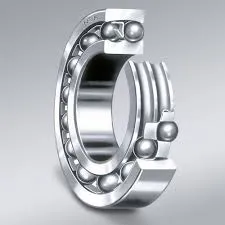
Oct . 11, 2024 16:38 Back to list
super precision angular contact bearings
Super Precision Angular Contact Bearings A Comprehensive Overview
In the realm of precision engineering, components that facilitate the smooth operation of machinery are crucial. Among these, super precision angular contact bearings stand out as essential elements, especially in high-speed and rigid applications. This article explores their design, functioning, applications, and the advantages they offer.
Understanding Angular Contact Bearings
Angular contact bearings are a type of rolling element bearing designed to accommodate axial loads in one direction, in addition to radial loads. The key distinguishing feature of angular contact bearings is the angle at which the races of the bearing contact the ball elements. This angle allows for optimized load distribution and increased flexibility in managing both radial and axial forces.
Super precision angular contact bearings are engineered for applications requiring incredibly tight tolerances, exceptional performance, and longevity. They typically feature high-quality steel construction, advanced surface finishing techniques, and precision manufacturing processes that significantly enhance their operational characteristics.
Design Features
1. Contact Angle The contact angle in these bearings typically ranges from 15 to 40 degrees. A higher angle results in greater axial load capacity, making these bearings suitable for applications with significant thrust loads.
2. Raceway Geometry The raceways are often precision ground to ensure uniformity and to minimize friction and wear. The optimized geometry also contributes to improved contact and load distribution, enhancing the bearing's overall performance.
3. Ball Diameter The ball diameter is carefully chosen to complement the bearing design, ensuring minimal slip and maximum load-bearing capacity.
4. Precision Classes Super precision bearings are available in various precision classes (from P4 to P2), indicating their manufacturing tolerances. P2 class bearings, the highest precision level, are used in the most demanding applications.
5. Sealing Options Depending on the application environment, these bearings can be fitted with seals or shields to protect against contaminants, thereby extending their service life.
Applications
Super precision angular contact bearings find widespread use in several demanding industries, including
super precision angular contact bearings

1. Aerospace These bearings are essential in aerospace applications due to their ability to withstand extreme temperatures, loads, and speeds.
2. Machine Tools In precision machine tools, such as CNC machines, these bearings provide the necessary support for high-speed spindles and ensure accuracy in machining operations.
3. Robotics Robots often require bearings that can maintain precision and stability while handling dynamic loads and movements.
4. Medical Equipment Equipment such as MRI machines and surgical robots demand super precision bearings to ensure reliability and accuracy in sensitive operations.
5. Optical Instruments High-quality optical devices require precision bearings to maintain alignment and performance amid varying loads and movements.
Advantages of Super Precision Angular Contact Bearings
1. Enhanced Performance The superior design and precision manufacturing of these bearings typically lead to reduced friction, lower operating temperatures, and longer service life.
2. Increased Load Capacity These bearings can handle both radial and axial loads simultaneously, allowing for better performance in applications where space and stability are critical.
3. Reduced Maintenance The robust design and high-quality materials used in super precision bearings minimize wear and tear, reducing the need for frequent maintenance and replacements.
4. Improved Accuracy With tighter tolerances and better load distribution, these bearings significantly enhance the accuracy of the machinery in which they are used.
5. Versatility Available in various designs and configurations, these bearings can be customized for specific application requirements, making them suitable for a wide range of industries.
Conclusion
Super precision angular contact bearings represent a critical component in modern engineering, enabling high-speed, high-accuracy operations across various sectors. Their innovative design, robust performance, and reliability not only enhance the longevity of machinery but also advance the capabilities of precision applications. As technology evolves, the demand for these bearings continues to grow, underscoring their importance in achieving engineering excellence. For engineers and manufacturers looking to optimize the performance of their machinery, investing in high-quality super precision angular contact bearings is an indispensable step toward success.
Latest news
-
Grooved Ball Bearing Design and Functionality
NewsJun.04,2025
-
Concrete Mixer Bearing Load Capacity Testing
NewsJun.04,2025
-
6004 Bearing Dimensions in Robotic Joint Designs
NewsJun.04,2025
-
Advantages of Single-Row Deep Groove Ball Bearings
NewsJun.04,2025
-
Applications of Deep Groove Ball Bearings in Automotive Systems
NewsJun.04,2025
-
Innovations in Bearing Pressing Machine Design
NewsJun.04,2025
